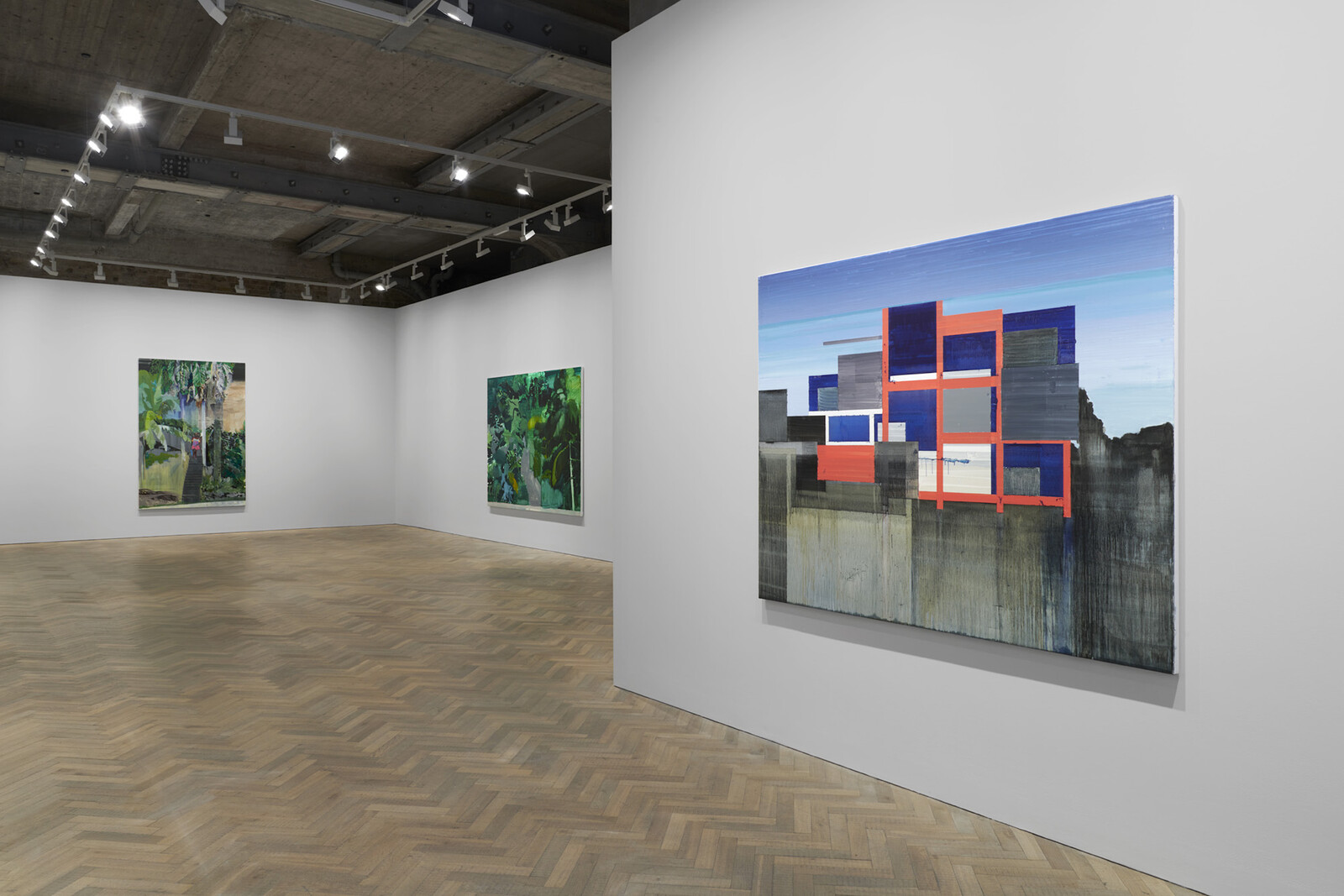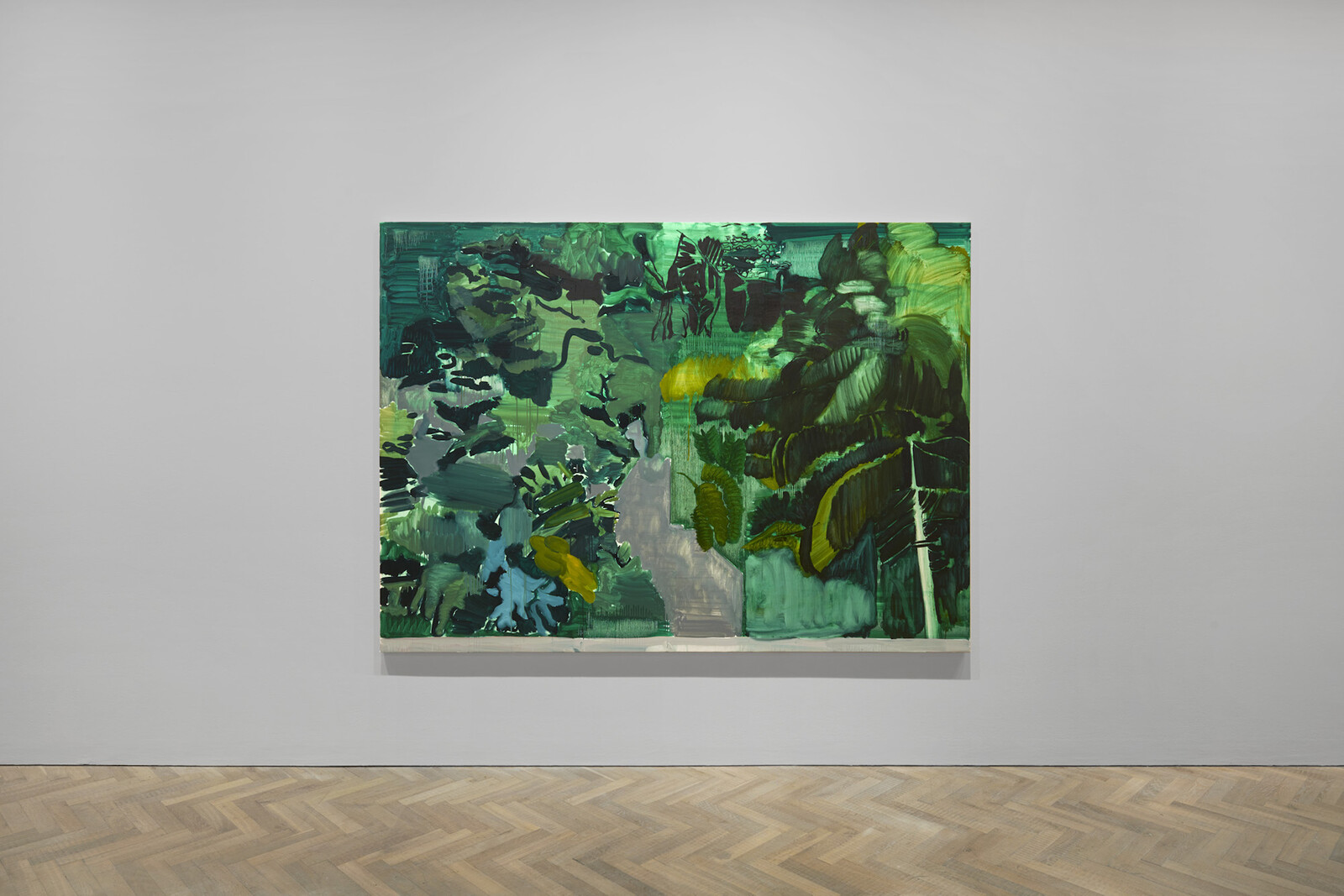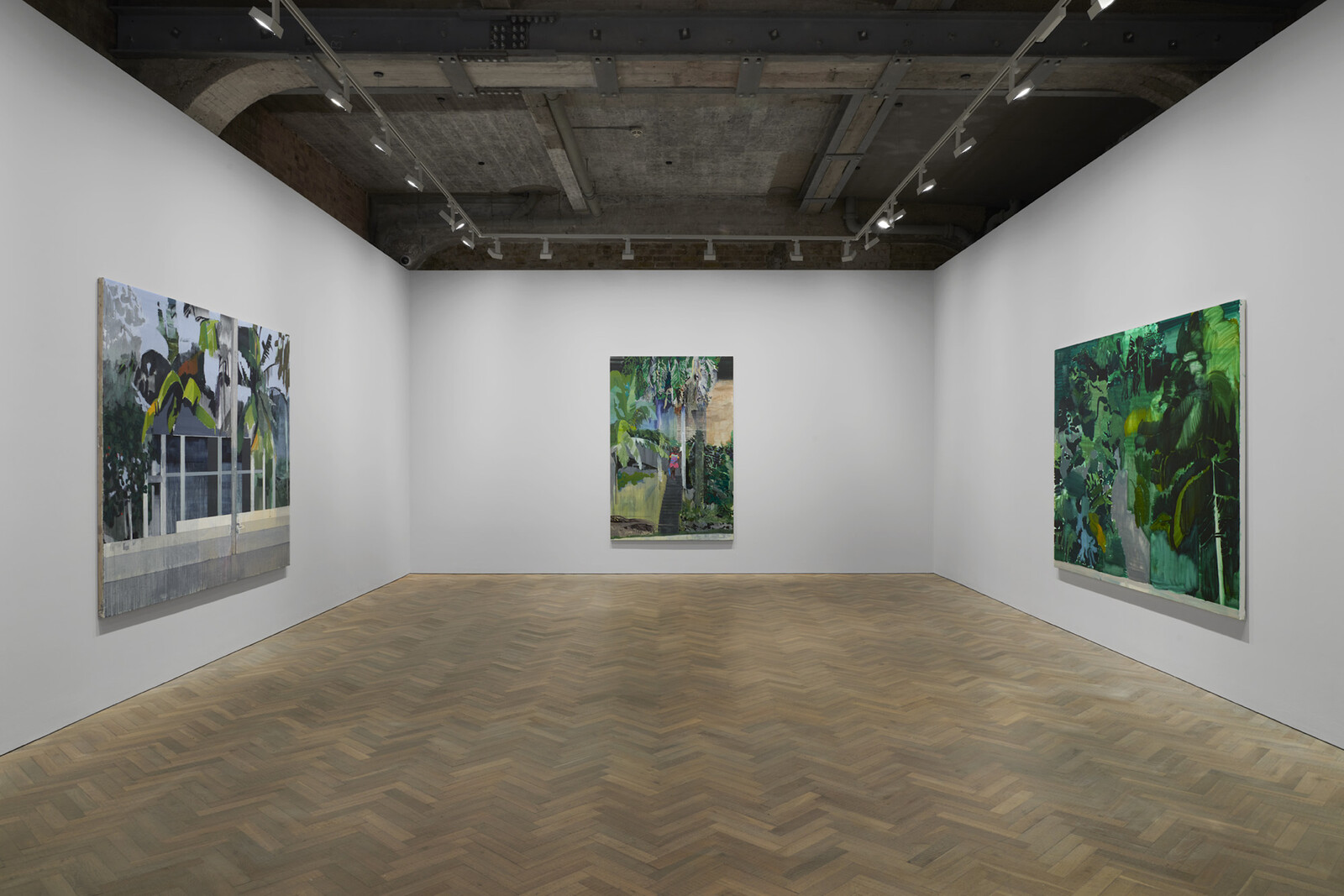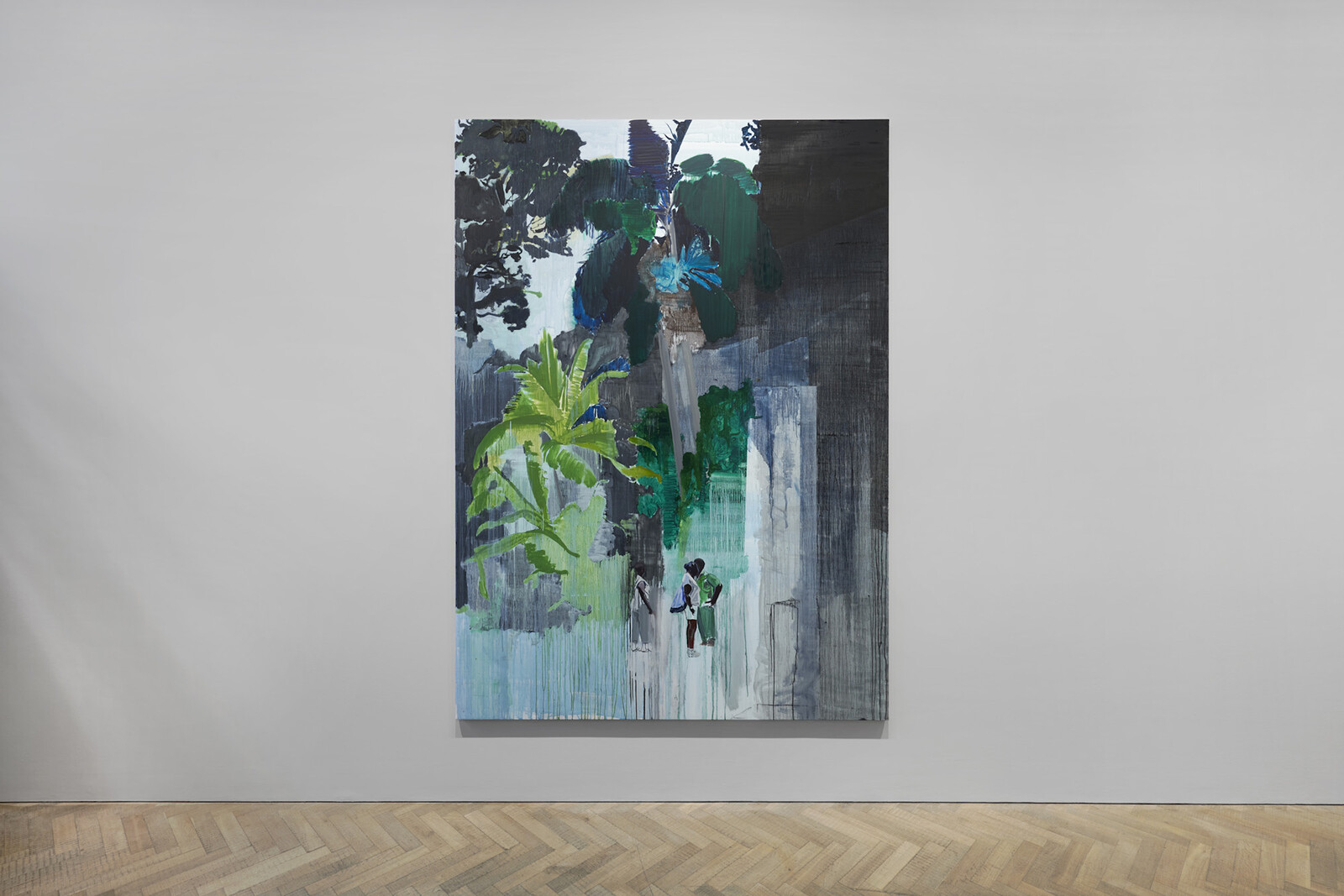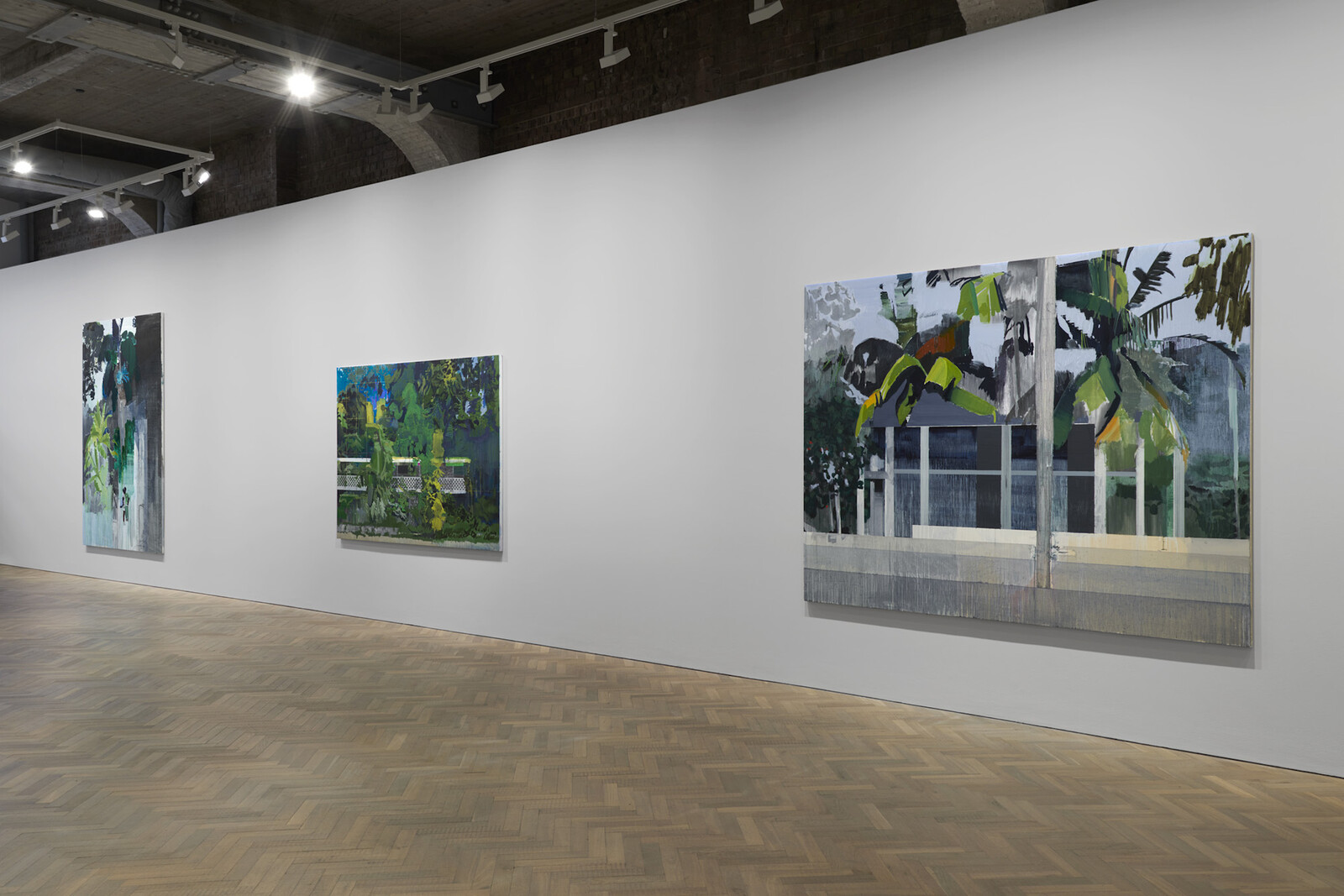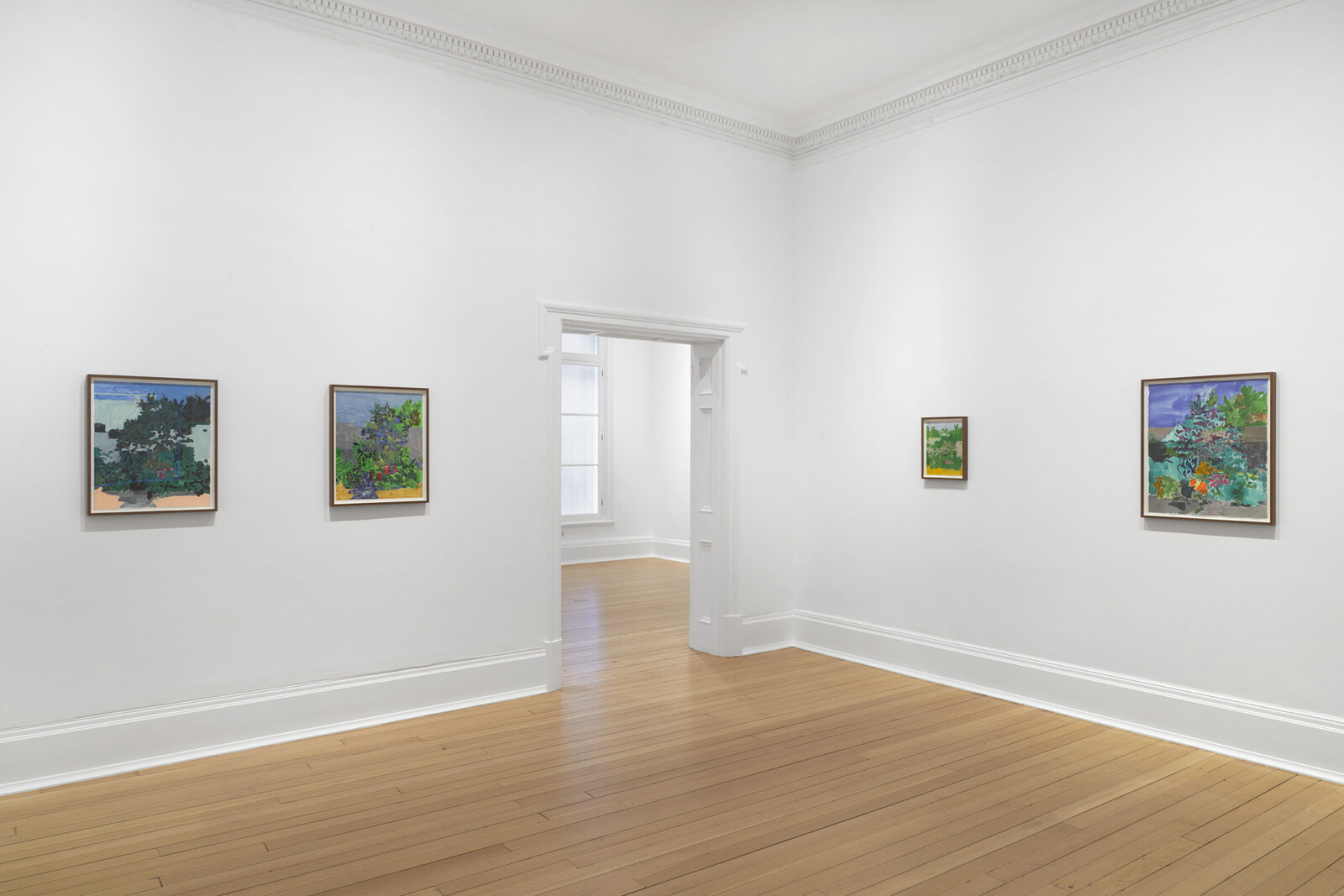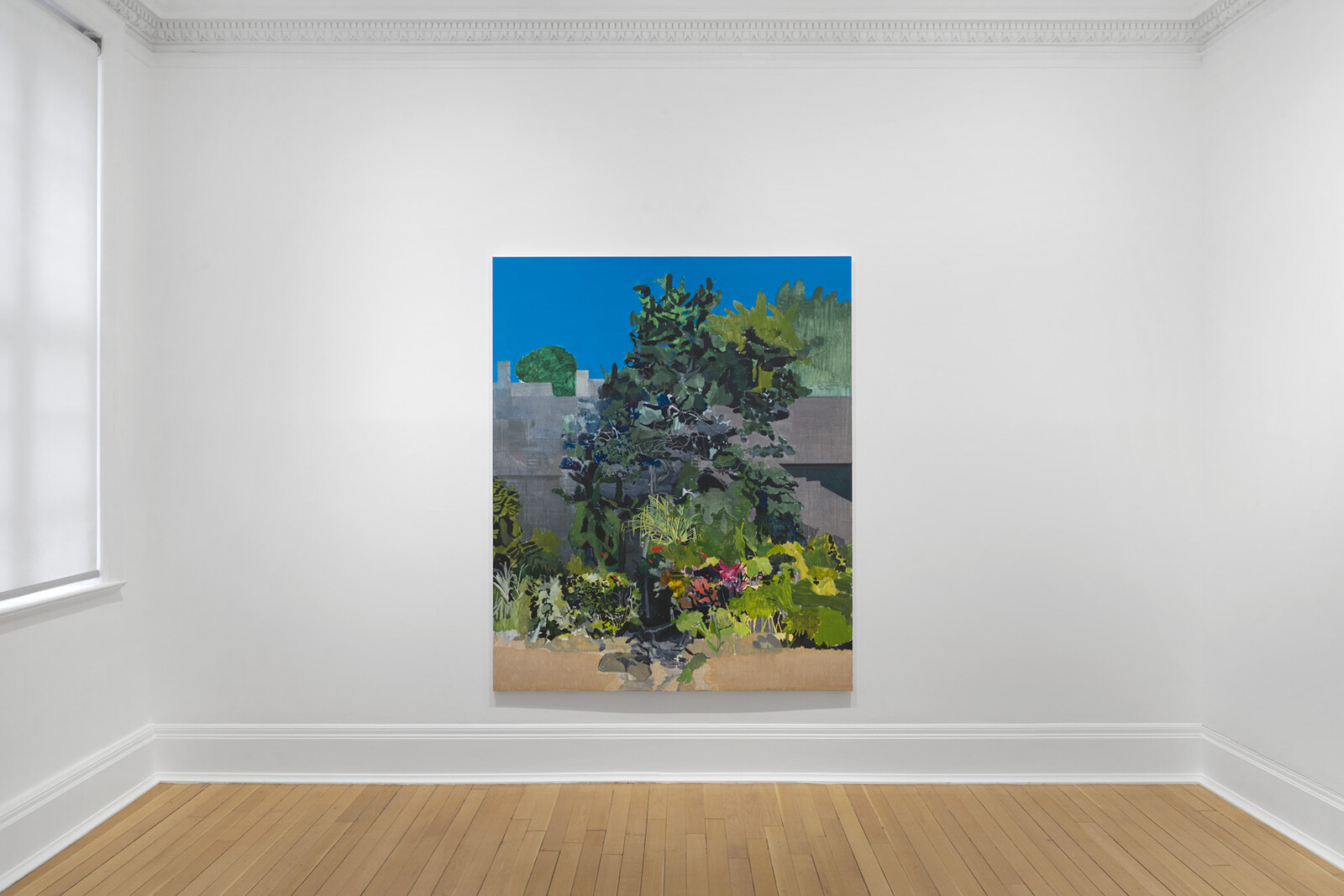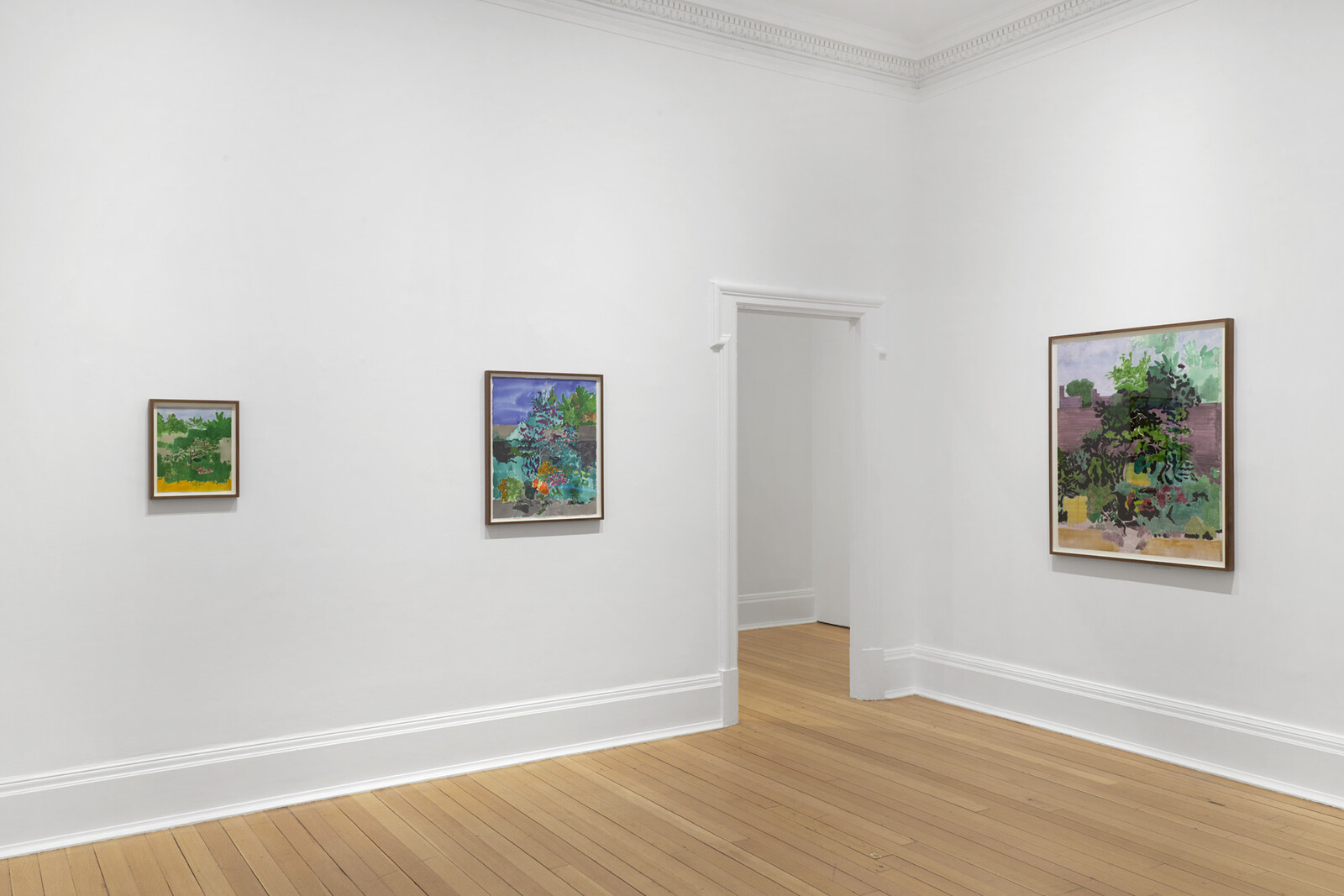The first painting you see on entering Thomas Dane’s white-cube gallery—one of the two Duke Street spaces devoted to Hurvin Anderson’s “Reverb”—is called Skylarking (all works 2021). In a two-meter tall canvas, three small figures stand in the lower foreground. A woman, to the left, looks away from the viewer. Another, in the middle, looks to the right, partially obscuring the face of a man standing behind her. Are they looking at one another? Conversing? Above loom palm trees in bursts of dark green, aquamarine, and lime—above, albeit only on the surface of a canvas. The size of the trees in relation to the diminutive figures makes it hard to situate both in a coherent three-dimensional space, one which further dissolves in the lower half of the canvas as the paint thins into long thin drips. In their frozen interactions, and in their relationship to the trees, these figures are at once proximate and distant; almost touching, yet floating in unarticulated space.
This sensation of proximity and distance is produced by all the paintings in this show, even when, as is more common, no human figures appear. Each work, rendered in oil, depicts a hotel complex in northern Jamaica, where Anderson’s parents lived before moving to Birmingham, UK, where he was born. In Genera Palmurum, the sense of being within and without a jungle is achieved by an intricate balance between dark and light greens which shift from conveying shadow and depth to appearing as a single flickering surface of foliage. Limestone Wall shows the concrete and stone hotel extending into the forest, evoking the South American modernism of Lina Bo Bardi. The image is overlaid by another totemic device of modernism: the grid. If the leaves rendered in lush streaks of paint envelop the building and reach out towards us, the grid flattens the image into a single surface, pulling it back away. In Higher Heights, the two-dimensional grid gives order to a three-dimensional building made up from a stack of cubes, whose shades of grey and blue contrast with a central scaffold of uniform pink. Natural growth, human structure: both leave us up close and far away.
That relationship is at the core of this exhibition. Its source could be autobiographical: seeking to explore Hurvin’s position in relation to Jamaica, the emigrant to their homeland. It could be a stance towards the modernist tradition these paintings cite: Cubism and Abstract Expressionism, Gerhard Richter and Sigmar Polke. Its origins could be more immediate: how we, like the people in Skylarking, are situated in any spatial environment. A rustle of leaves brings the forest close, even though our sight tells us it is far away. Unlike much of the work gaining attention in the current vogue for large-scale painting, where a colorful blend of figuration and abstraction results in a quickly legible Instagram post, what makes these paintings so satisfying, and so rewarding of repeated viewing, is that Anderson has found a form and technique to make his works all these things at once. The particular case of his relationship to Jamaica unfolds into a set of broader art-historical and spatial conditions.
A second exhibition space up the street—this time, three wood-paneled rooms on the first floor of a Georgian townhouse—shows two paintings, Jungle Blood and Ashanti, accompanied by a raft of preparatory studies: watercolors, acrylics, drawings, and photographs. Anderson only works from photographs, often documenting a site like this hotel for years before beginning to paint. Here we see these photographs divided into grids, covered by pink or yellow foliage, or partially erased by artificial blue skies. Layers, additions, and re-organizations transform an image into a painting. Is this work of deconstruction and reassembly meant to reveal a skepticism about the relationship between visual reality and its reproduction? A doubt about the closeness between what we see and what we remember? That we are always both near and far to the images in our memory, to our own past, and hence to ourselves: is that why, like the people in Skylarking, we find ourselves so often simultaneously close and distant in our relationships with one another?
Maurice Merleau-Ponty once wrote that Cézanne’s greatness as a painter was inseparable from his doubt. Uncertainty about the relationship of his body to the world, his sight to what he saw, led Cézanne to return to the same motifs over and over again, to break the language of painting apart into its constituent grammars of daub, touch, and mark. Anderson’s work seems too to be generated from doubt, and as with Cézanne, it is the source of a beguiling, unsettling achievement.
